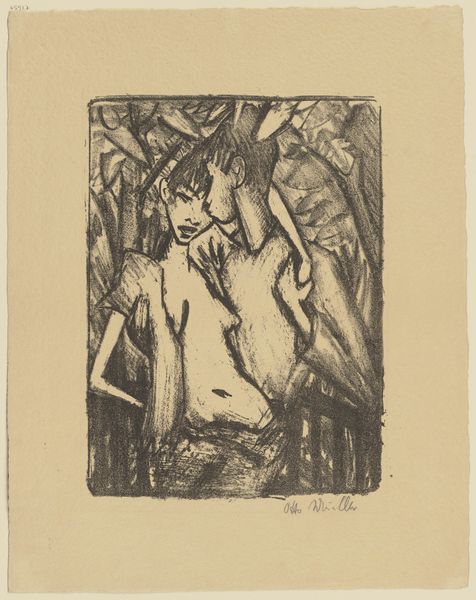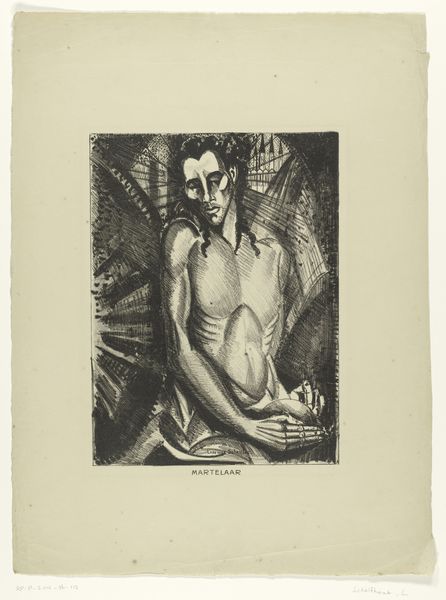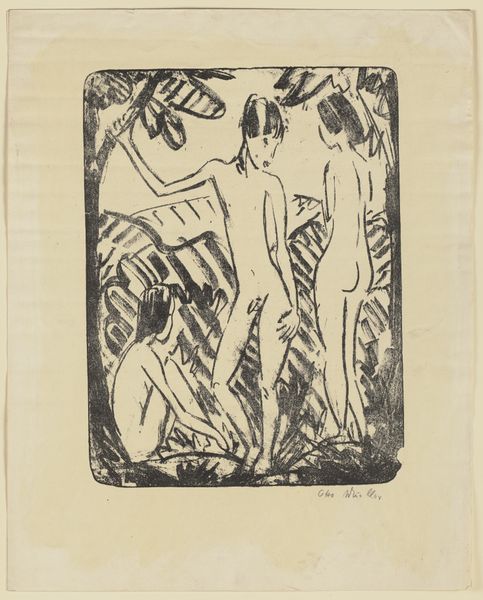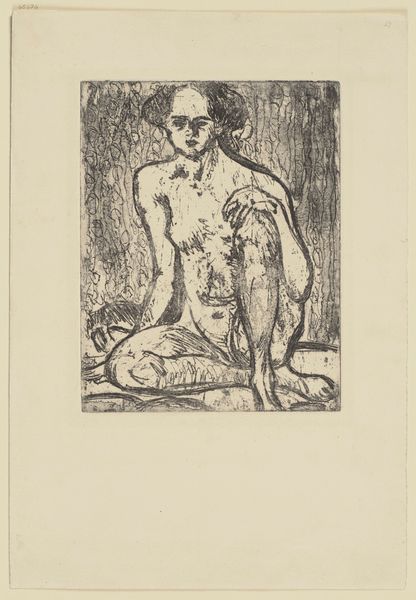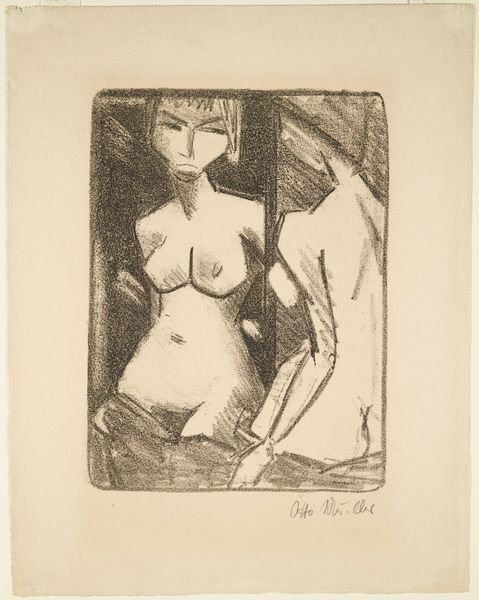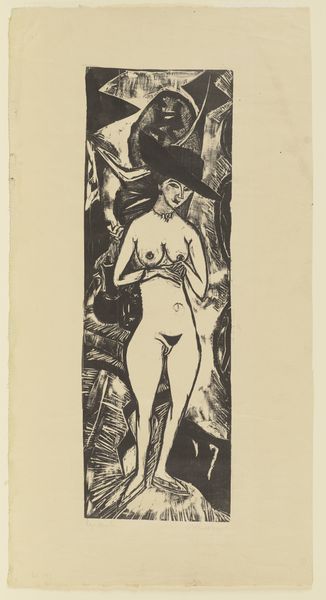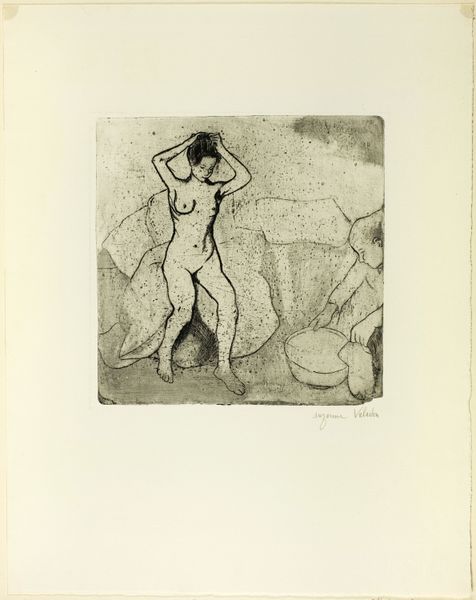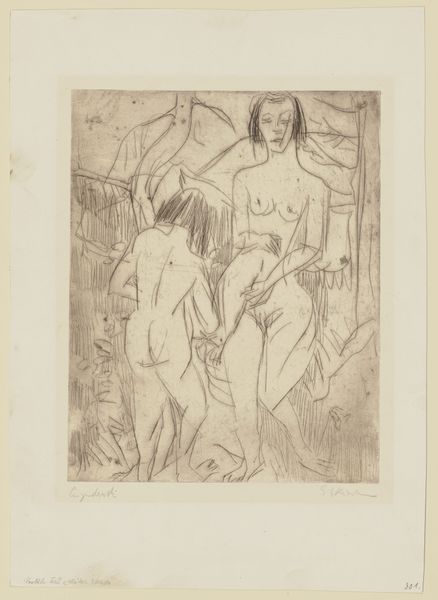
drawing, lithography, lithograph, paper
#
portrait
#
drawing
#
lithography
#
lithograph
#
landscape
#
figuration
#
paper
#
expressionism
#
line
Copyright: Public Domain
Curator: This lithograph before us, created by Otto Mueller between 1921 and 1922, is entitled "Liebespaar II," or "Lovers II." The work now resides here at the Städel Museum. Editor: The first impression is a certain disquiet—the somber shading, the almost defensive postures of the figures. There is intimacy, sure, but also constraint, a feeling of being boxed in, maybe even a bit anxious. Curator: Considering the time, post-World War I Weimar Germany, those feelings of anxiety make sense. Mueller belonged to Die Brücke, a group of German Expressionist artists seeking to express raw emotional experiences. It wasn't always about harmonious connection. Gender dynamics were in flux; relationships felt the strain. Editor: Yes, you see how they are framed, almost barricaded, by this dense backdrop—it's an intriguing visual choice. There's also a compelling juxtaposition of the vulnerability of the nude female figure, yet her face possesses a strength or defiance against what I see as looming angularity that could relate to danger. The man almost disappears, with a more gentle support through embrace rather than an active participant in her expression. Curator: Exactly! These works often challenged traditional gender roles and expectations, presenting new possibilities for thinking about the relationships. Lithography as a medium itself lent well to that expressiveness through its immediacy of line and stark contrast. This stark visual reality served as a reflection on the social upheavals that shaped those relationships at the time. Editor: The repeated symbols of embrace and nature create an interesting dialogue here. You see in other works depictions of Romani people or other marginalized groups appear with greater presence in nature or connected through such intimacy. There is the idea of refuge being a connecting space as an identity or sense of place within societal disruption. Curator: Absolutely. Through art we reflect back on past sociopolitical structures, considering through Mueller’s gaze both their constraints but also their great potential for change. Editor: Reflecting now, it seems it captures a world grappling with identity, love, and survival in ways that, sadly, still resonate today. It goes beyond a simple love scene, acting as a signifier for so much more.
Comments
No comments
Be the first to comment and join the conversation on the ultimate creative platform.
